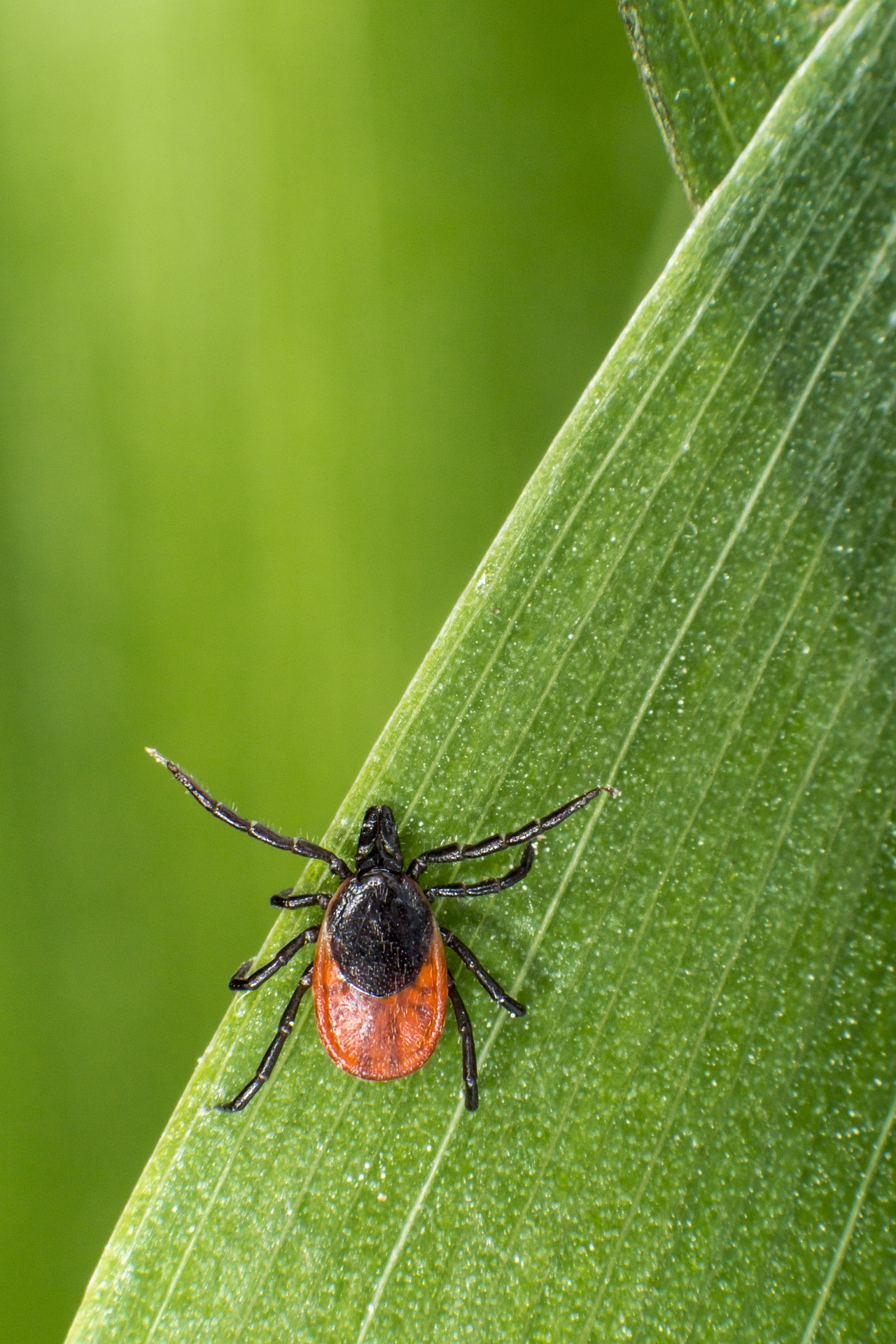The Castor Bean Tick, scientifically known as Ixodes ricinus, is a species of hard-bodied tick found throughout Europe and parts of Asia and North Africa. This tick is an important vector of various pathogens that can affect humans and animals. Here are some key features and characteristics of the Castor Bean Tick:
- Appearance:
- Size: Adult ticks are about 2.5 to 4 millimeters long when unfed, but can swell to 10 millimeters or more when engorged with blood.
- Color: Unfed adults are reddish-brown, but they become grayish-blue when engorged.
- Shape: The body is oval and flattened when unfed, but becomes rounded and engorged after feeding.
- Habitat:
- Ixodes ricinus is typically found in areas with dense vegetation, such as forests, woodlands, grasslands, and heathlands. They prefer humid environments which are necessary for their survival.
- They are often found in areas with high populations of host animals like deer, rodents, and birds.
- Distribution:
- This tick species is widespread across Europe and parts of western Asia and North Africa.
- They are commonly found in temperate regions where conditions are suitable for their life cycle.
- Lifecycle:
- The lifecycle of Ixodes ricinus includes four stages: egg, larva, nymph, and adult. It typically takes 2 to 3 years to complete.
- Eggs: Females lay eggs in the environment, usually in leaf litter or soil.
- Larvae: After hatching, larvae (also known as seed ticks) seek small hosts like rodents and birds for their first blood meal.
- Nymphs: After feeding, larvae molt into nymphs, which then seek out a host for their second blood meal. Nymphs are a major vector stage for transmitting diseases to humans.
- Adults: After molting, nymphs become adults. Adult females need a blood meal to reproduce, and they often attach to larger animals, including humans.
- Feeding:
- Ixodes ricinus attaches to its host using its mouthparts to pierce the skin and feed on blood. Feeding can last several days, during which the tick can transmit pathogens.
- They use sensory organs to detect carbon dioxide, heat, and movement from potential hosts.
- Diseases and Pathogens:
- Ixodes ricinus is a vector for several serious diseases, including Lyme disease (caused by Borrelia burgdorferi), anaplasmosis, tick-borne encephalitis (TBE), babesiosis, and rickettsioses.
- The risk of disease transmission increases the longer the tick remains attached to the host.
- Prevention and Control:
- Personal Protection: To prevent tick bites, it is advisable to wear long sleeves and pants, use tick repellents, and perform regular tick checks after spending time in areas where ticks are common.
- Environmental Management: Reducing tick habitat around homes and recreational areas by clearing leaf litter, tall grasses, and brush can help lower tick populations.
- Tick Removal: If a tick is found attached to the skin, it should be removed promptly and carefully using fine-tipped tweezers. Grasp the tick as close to the skin as possible and pull steadily without twisting.
- Public Health Significance:
- Due to its role in transmitting multiple diseases, Ixodes ricinus is of significant concern to public health.
- Public awareness and education on tick bite prevention and the symptoms of tick-borne diseases are crucial for reducing the impact of these diseases.
In summary, the Castor Bean Tick (Ixodes ricinus) is a widespread and significant tick species known for its role in transmitting various pathogens that can affect both humans and animals. Its lifecycle and habitat preferences make it a common presence in many temperate regions, and it is important to take preventive measures to reduce the risk of tick bites and associated diseases.
Visited 910 times, 6 visit(s) today
Views: 1338
Subscribe to the newsletter:
